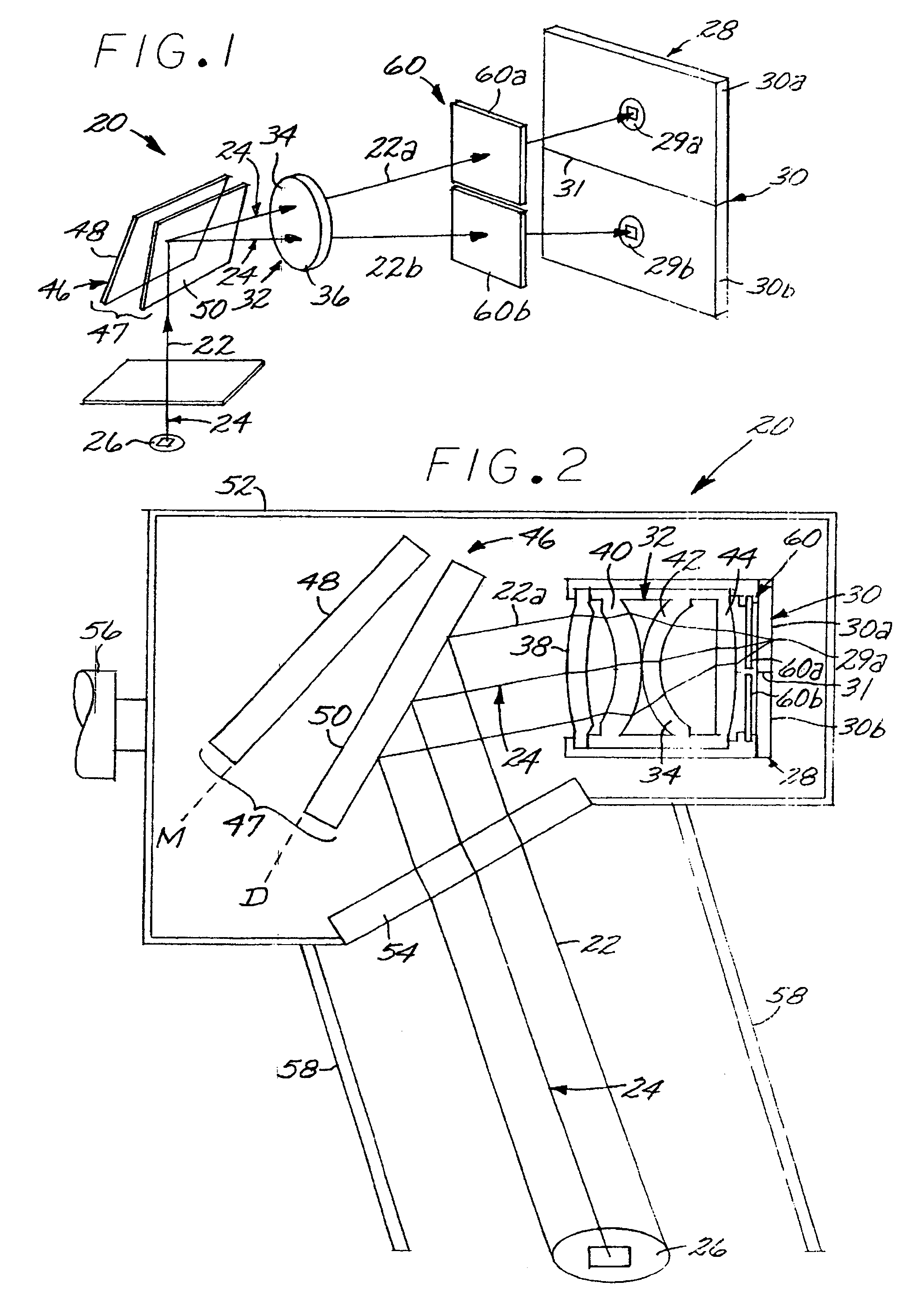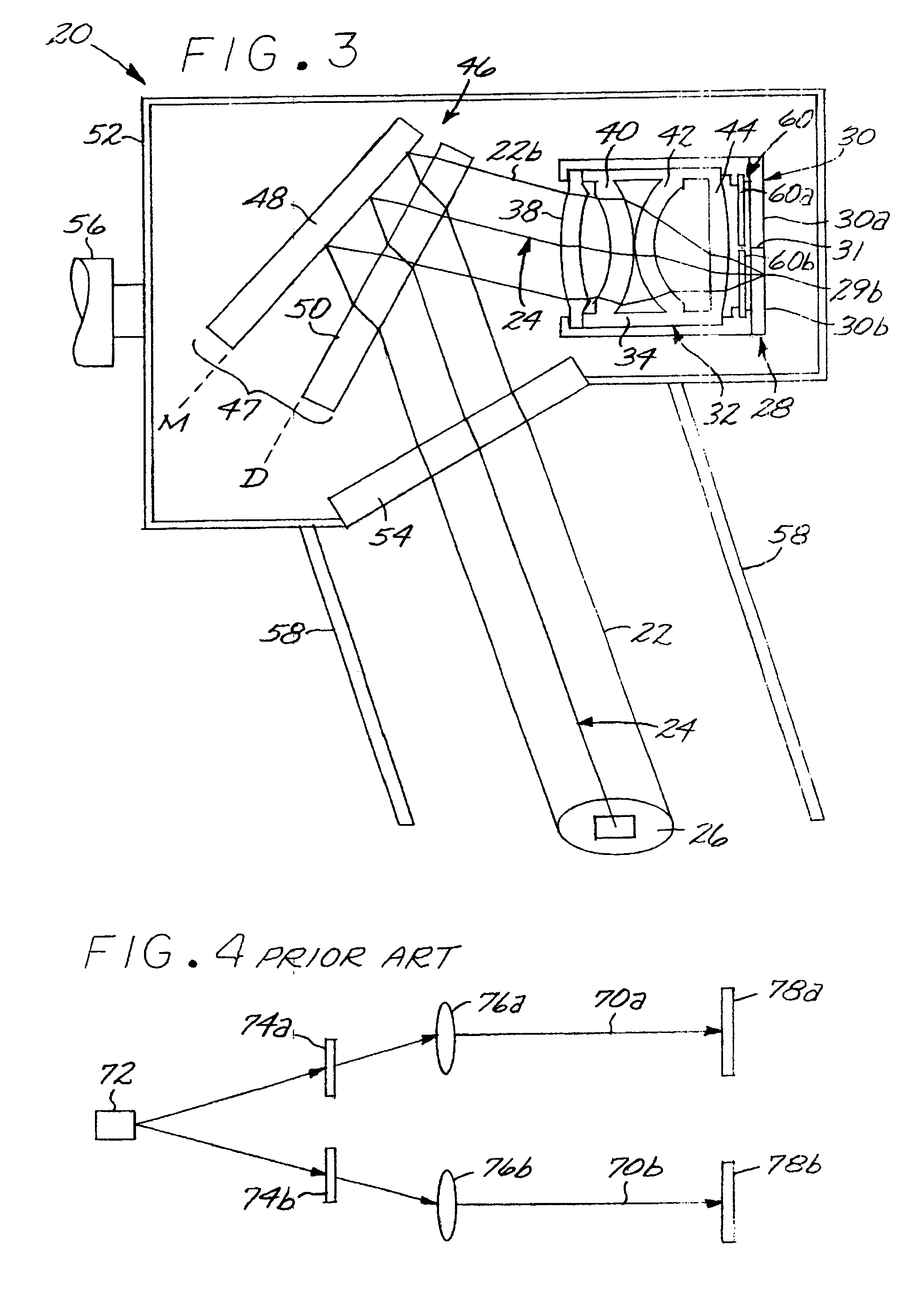Dual-band sensor system utilizing a wavelength-selective beamsplitter
a sensor system and wavelength-selective technology, applied in the field of dual-band sensor systems utilizing wavelength-selective beam splitters, to achieve the effect of reducing the size and weight of the two-spectral-band imaging sensor system and avoiding calibration problems
- Summary
- Abstract
- Description
- Claims
- Application Information
AI Technical Summary
Benefits of technology
Problems solved by technology
Method used
Image
Examples
Embodiment Construction
[0022]FIGS. 1-3 schematically depict an imaging sensor system 20 that images a light beam 22 traveling in two (or more) different spectral bands λ1 and λ2 on a light path 24 from a target 26. The “spectral bands”λ1 and λ2 may each refer to a single discrete wavelength or to a range of wavelengths, and there may be other wavelengths present in the light beam 22 as well. The spectral bands λ1 and λ2 may be in any range, such as the ultraviolet, visible, or infrared, but are preferably in the infrared for the applications of most interest.
[0023]The sensor system 20 includes an imaging sensor 28 operable to image respective light subbeams 22a and 22b of the respective different spectral bands λ1 and λ2. The imaging sensor 28 preferably includes at least one focal plane array 30, and preferably exactly one focal plane array 30. If exactly one focal plane array 30 is used, that focal plane array 30 must be capable of imaging light of both spectral bands λ1, and λ2. The use of exactly one ...
PUM
| Property | Measurement | Unit |
|---|---|---|
| wavelength-selective | aaaaa | aaaaa |
| infrared spectral | aaaaa | aaaaa |
| thermal emissivity | aaaaa | aaaaa |
Abstract
Description
Claims
Application Information
 Login to View More
Login to View More - R&D
- Intellectual Property
- Life Sciences
- Materials
- Tech Scout
- Unparalleled Data Quality
- Higher Quality Content
- 60% Fewer Hallucinations
Browse by: Latest US Patents, China's latest patents, Technical Efficacy Thesaurus, Application Domain, Technology Topic, Popular Technical Reports.
© 2025 PatSnap. All rights reserved.Legal|Privacy policy|Modern Slavery Act Transparency Statement|Sitemap|About US| Contact US: help@patsnap.com



